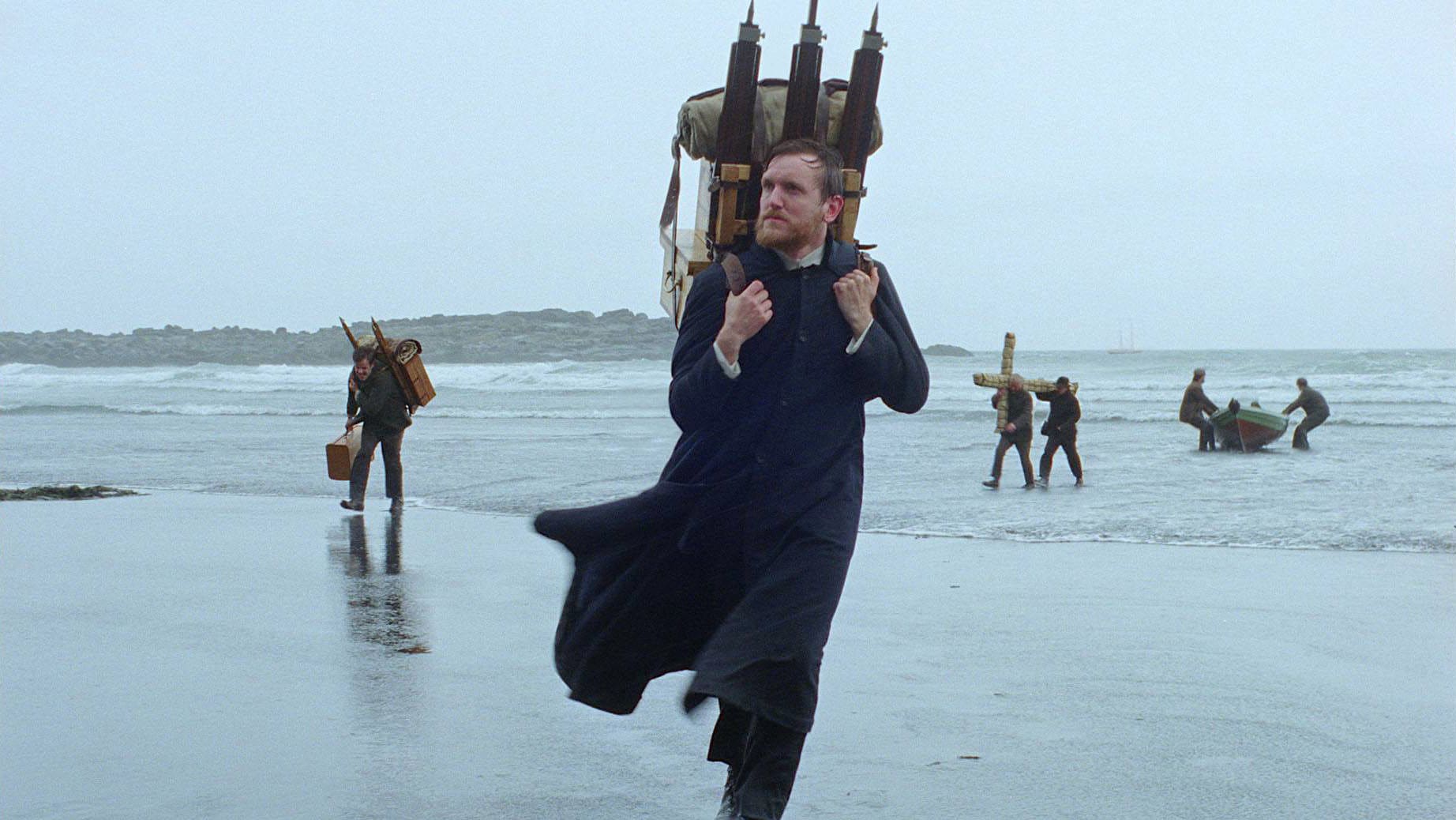Godland reminds us yet again that when it comes to film-making there’s always something going on in Iceland. How can a population that small – roughly 380,000 – produce so many talented writer directors?
Hlynur Pálmason sits alongside the likes of Valdimar Jóhannsson, Baltasar Kormákur, Benedikt Erlingsson, Grimu Hákonarson and Óskar Jónasson as a director whose films aren’t just good and popular but also distinctly Icelandic. Watching their movies there’s also a strong sense of the connection between Iceland and its Viking settlers.
Godland is, to some extent, a case of the Extreme Nordic (see also Kormákur’s The Deep, Erlingsson’s Of Horses and Men or Hákonarson’s Rams for more of the same, with the Dane Nicolas Winding Refn getting an honorary membership of the club on account of his Valhalla Rising, the most badassedly Nordic of them all).
Set in the 19th century, Pálmason’s film tells the story of a priest sent to Iceland to found a church in the vicinity of a volcano. He takes with him a huge plate camera and photographs what he finds there – the people, the landscape, the way of life – coating his own photographic glass plates with a mixture of raw eggs and silver powder, then developing the resulting pictures in a makeshift darkroom.
It’s a hostile environment and no place for a softie, which Lucas (Elliott Crosset Hove) obviously is. This much we glean from the face of Ragnar (Ingvar Sigurdsson or Sigur∂sson, as he’s more authentically billed), Lucas’s guide helping him cross this barren, austerely beautiful land, leading him on towards his destination, never missing an opportunity to cast a stern look or act as a goad. Lucas is everything Ragnar detests – Danish and effete. But then everyone ranks as effete compared to Ragnar, an iron-tough old guy with a spade beard who takes every opportunity to strip down to his underwear to wash out in the cold fresh air.
Godland divides neatly into two. Part one is the journey and is an exquisite exercise in slow cinema. A waterfall is tracked on its long drop from coming over the top to the pool below. Later, satanically glowing lava is followed as it creeps over the ground. There is little explanation. Pálmason is all show and no tell. How to sail, how to skin and gut a sheep, how to cross a river in full spate.
In part two things broaden out a bit and Pálmason’s static vistas in an old-school format with rounded corners – like ancient photographs come to life – yield to something a touch livelier, as Lucas meets and interacts with Carl (Jacob Hauberg Lohmann) and daughters Anna (Vic Carmen Sonne) and Ida (Ída Mekkín Hlynsdóttir). It’s among this family, next door to the church Lucas is here to consecrate, where a redemptive/tragic drama centred on Lucas’s essential otherness will play out.
Pálmason gives us a touch of Dreyer early on, in a sparely shot scene set in Denmark. Once the action shifts to Iceland things become a little more like Werner Herzog in his Aguirre years – a man on a mission in a hostile environment with emotions tending towards the paranoid. Later on, chez Carl and co, it’s John Ford who most often comes to mind, in particular in the segment set at a wedding, where the men celebrate with wrestling matches. Things get more John Wayne in this movie than you might expect.
The harshness of the Icelandic environment is a constant, with the excellent Sigur∂sson (you might have seen him in Lamb or The Northman, or on TV in Killing Eve or Succession) its human incarnation. Crosset Hove plays Lucas as the Icelanders see him, as soft, retiring and devious, an “odd one”, as Carl puts it. The tension between Dane and Icelander is a constant too, with the speaking or non-speaking of Danish a plot driver (the English subtitling shifts in style depending on which language is being spoken).
A peculiarly matter-of-fact drama, austere because that’s just the way it is, but with a kick in the tail. Very nice indeed.
Godland – Watch it/buy it at Amazon
I am an Amazon affiliate
© Steve Morrissey 2024


